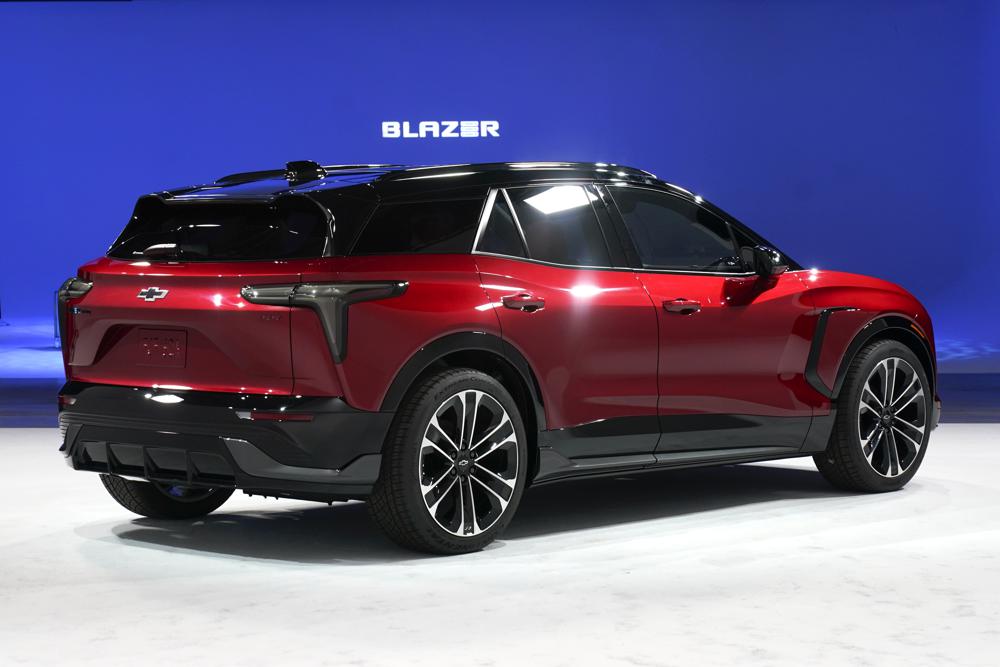
In their first rollouts of electric vehicles, America’s automakers targeted people who value short-range economy cars. Then came EVs for luxury buyers and drivers of pickups and delivery vans.
Now, the companies are zeroing in at the heart of the U.S. auto market: The compact SUV. In their drive to have EVs dominate vehicle sales in coming years, the automakers are promoting their new models as having the range, price and features to rival their gas-powered competitors.
Some are so far proving quite popular. Ford’s $45,000-plus Mustang Mach E is sold out for the model year. On Monday night, General Motors’ Chevrolet brand introduced an electric version of its Blazer, also starting around $45,000, when it goes on sale next summer.
Also coming next year: An electric Chevy Equinox, with a base price of about $30,000, whose price could give it particular appeal with modest-income households. There’s also the Hyundai Ioniq 5 and Volkswagen’s ID.4 in the $40,000s and Nissan’s upcoming Ariya around $47,000 with a lower-priced version coming.
All start off considerably less expensive than Tesla’s Model Y small SUV, the current top EV seller, with a starting price well into the $60,000s.
The new models, which can get about 300 miles per electric charge, are aimed at the largest segment of the U.S. market: Modest-size SUVs, representing about 20% of new-vehicle sales. Industry experts say entering the smaller SUV segment, with its reach into a broader demographic of buyers, is sure to boost electric vehicle sales nationally.
“Going to the smaller utility segment gives you the opportunity to access the most customers in one (market) segment,” said Stephanie Brinley, principal analyst for S&P Global Mobility. “To make a transition from (internal combustion engines) to electric, you have to be in more space. You have to be in more price points. You have to be in more sizes.”
Brinley noted that the small and midsize SUV segments meet many people’s needs, something that previous electric vehicles did not.
“If it’s a price you can reach but it’s a product that you can’t put your kids and your dog in, you’re not going to buy it,” she said.
Chevrolet says the Blazer will get a minimum of 247 miles (398 kilometers) per charge. Pricier high-end versions could go up to 320 miles (515 kilometers). The Blazer will be available with Chevrolet’s SS performance package with a zero-to-60 mph (97 kilometers per hour) time of under four seconds. There will be a police version, too.
“Early on, the demographic composition of an EV buyer was certainly someone that perhaps had higher education, higher household income,” said Steve Majoros, Chevrolet’s marketing director. “That’s very indicative of early adopters. But as we move up that curve, the intention and where we’re pricing this product is to certainly make it more available for more mainstream buyers.”
To attract buyers of modest means, EVs need to be priced even lower, in the $30,000-to-$35,000 range, GM CEO Mary Barra said in an interview this week with The Associated Press. Electric vehicles, she said, also have to have the range and charging network so they can be the sole vehicle that some people own.
“Most electric vehicle owners today own multiple vehicles, so they have an internal combustion vehicle to jump into depending on their needs,” Barra said.
Automakers have been pushing to fully restore a $7,500 tax credit for people who buy EVs to jump-start sales. But the measure is stalled in Congress.
